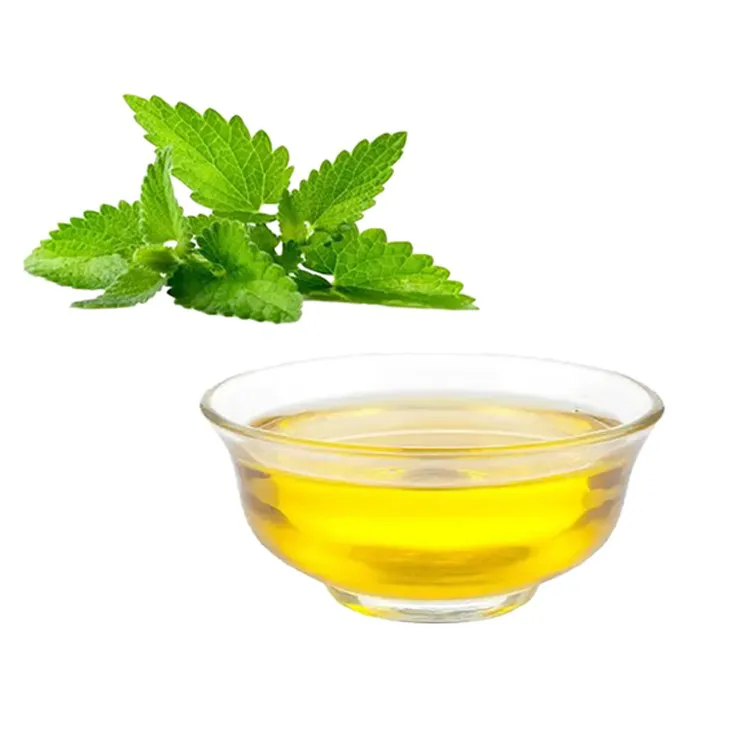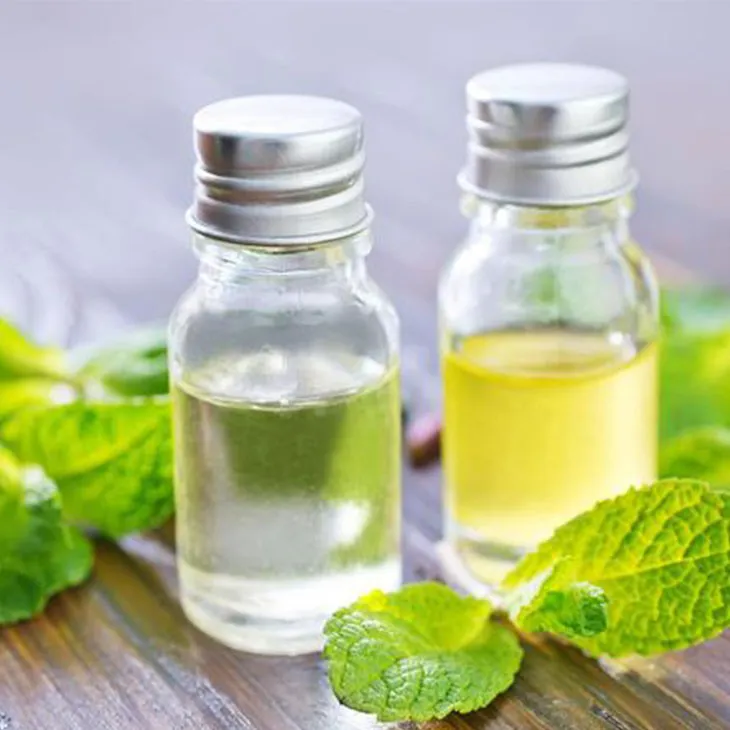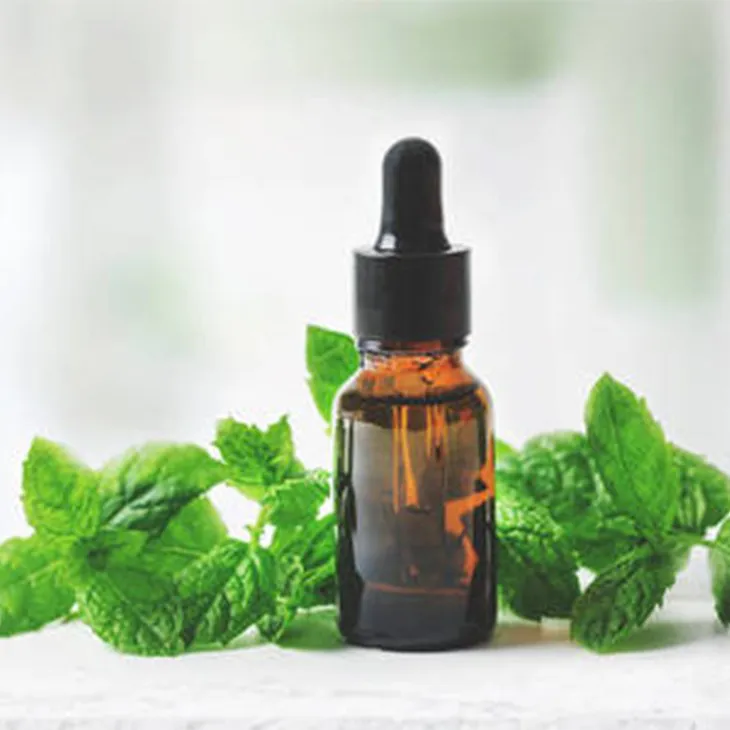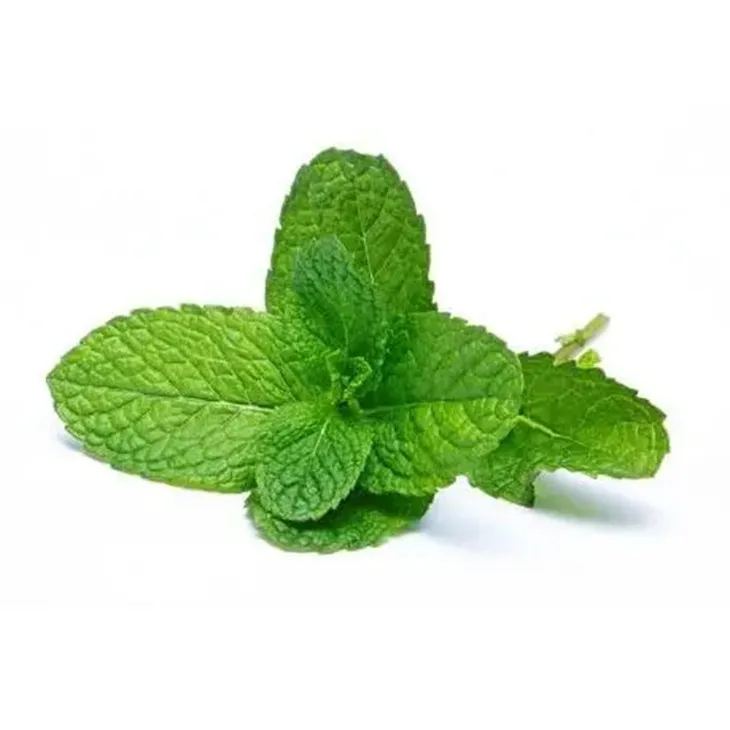- 0086-571-85302990
- sales@greenskybio.com
Aromatic Adventure: A Detailed Guide to Peppermint Oil Extraction
2024-08-19

Introduction: The Allure of Peppermint Oil
Peppermint Oil is a highly valued essential oil with a wide range of applications. Peppermint (Mentha × piperita) is a hybrid mint, a cross between watermint and spearmint. It is known for its strong, refreshing aroma and cooling sensation. The unique properties of peppermint are what make its oil so desirable in various industries.
One of the main components of Peppermint Oil is menthol, which gives the oil its characteristic cooling effect. Menthol has analgesic, anti - inflammatory, and antimicrobial properties. Additionally, peppermint oil contains other important compounds such as menthone, limonene, and cineole, which contribute to its overall aroma and therapeutic qualities.

The Extraction Process: From Plant to Oil
1. Harvesting Peppermint
Peppermint is typically harvested when it is in full bloom, usually in mid - to late - summer. The plants are cut close to the ground using sharp tools such as sickles or mechanical harvesters. It is important to harvest at the right time to ensure maximum oil content in the plants.
2. Drying the Peppermint
After harvesting, the peppermint plants need to be dried. This can be done in a well - ventilated area, either by hanging the plants in bundles or spreading them out on drying racks. Drying helps to reduce the moisture content of the plants, which is crucial for the extraction process. The drying process usually takes a few days to a week, depending on the environmental conditions.
3. Steam Distillation: The Most Common Extraction Method
Steam distillation is the most widely used method for extracting peppermint oil. In this process:
- The dried peppermint is placed in a distillation apparatus. The apparatus consists of a still, a condenser, and a collection vessel.
- Steam is passed through the dried peppermint in the still. The steam helps to release the volatile oil compounds from the plant material.
- The steam - laden with the peppermint oil vapors then passes through the condenser. In the condenser, the steam is cooled and condensed back into liquid form.
- The condensed liquid, which contains both water and peppermint oil, is collected in the collection vessel. Since oil and water do not mix, the peppermint oil will float on top of the water.
- The peppermint oil is then separated from the water using a separating funnel. This process yields pure peppermint oil.
4. Solvent Extraction: An Alternative Method
Solvent extraction is another method for obtaining peppermint oil, although it is less common than steam distillation. In solvent extraction:
- A solvent, such as hexane or ethanol, is used to dissolve the oil from the peppermint plant material.
- The solvent - oil mixture is then filtered to remove the plant debris.
- The solvent is evaporated off, leaving behind the peppermint oil. However, this method requires careful handling of solvents to ensure the purity and safety of the final product.

Quality Control in Peppermint Oil Extraction
1. Testing for Purity
One of the key aspects of quality control in peppermint oil extraction is testing for purity. This involves:
- Gas chromatography (GC) analysis, which can identify and quantify the different components in the peppermint oil. This helps to ensure that the oil contains the appropriate levels of menthol, menthone, and other key compounds.
- Testing for contaminants such as pesticides, heavy metals, and residual solvents. Peppermint plants may be exposed to pesticides during cultivation, and any residues in the oil can be harmful. Similarly, if solvent extraction is used, it is crucial to check for residual solvents.
2. Assessing Aroma and Flavor
The aroma and flavor of peppermint oil are also important quality indicators. Trained sensory evaluators may be used to:
- Smell and taste the peppermint oil to ensure that it has the characteristic fresh, minty aroma and flavor. Any off - odors or flavors may indicate problems during extraction or contamination.
- Compare the aroma and flavor of the extracted oil with industry standards or reference samples. This helps to maintain consistency in the quality of peppermint oil products.
3. Packaging and Storage Considerations
Proper packaging and storage are essential for maintaining the quality of peppermint oil. The following factors are important:
- Peppermint oil should be stored in dark, glass bottles to protect it from light, which can degrade the oil. Amber - colored bottles are often preferred as they block out most of the harmful UV light.
- The bottles should be sealed tightly to prevent evaporation and contamination. Using air - tight caps or closures is recommended.
- Storage temperature should be cool and stable. Peppermint oil should be stored away from heat sources such as direct sunlight or radiators, as high temperatures can cause the oil to deteriorate.

Cultural and Historical Significance of Peppermint Oil
Peppermint oil has a long and rich history in different cultures around the world. In ancient times:
- The Egyptians used peppermint for medicinal purposes. They were aware of its digestive and soothing properties and used it to treat various ailments.
- The Greeks and Romans also valued peppermint for its medicinal and aromatic qualities. They used it in perfumes, baths, and as a flavoring in food and drinks.
During the Middle Ages, peppermint was grown in monastery gardens in Europe. Monks used it for its medicinal properties and also for its pleasant aroma. Over time, peppermint oil became more widely used in traditional medicine systems in different parts of the world.
In traditional Chinese medicine, peppermint has been used to treat headaches, sore throats, and digestive problems. In Ayurvedic medicine in India, it has been used for similar purposes, as well as for its cooling and refreshing effects on the body.

Modern Applications of Peppermint Oil in Medicine and Wellness
1. Medicinal Uses
Peppermint oil has several medicinal applications in modern medicine:
- It is used as a natural remedy for digestive problems such as indigestion, bloating, and irritable bowel syndrome (IBS). The menthol in peppermint oil helps to relax the smooth muscles in the digestive tract, reducing spasms and promoting normal digestion.
- For headache relief, peppermint oil can be applied topically to the temples or forehead. The cooling effect of menthol provides a soothing sensation and may help to relieve pain.
- Peppermint oil also has antimicrobial properties and can be used to treat minor skin infections. It can be added to creams or ointments for this purpose.
2. Wellness and Aromatherapy
In the realm of wellness and aromatherapy, peppermint oil is highly regarded:
- Its refreshing aroma makes it a popular choice for use in diffusers. Inhaling the scent of peppermint oil can help to improve concentration, reduce stress, and boost energy levels.
- Peppermint oil can be added to bath products such as bath salts or oils. A warm peppermint - scented bath can be relaxing and invigorating at the same time.
- It is also used in massage oils. When used in massage, the cooling and soothing properties of peppermint oil can help to relieve muscle tension and soreness.
Conclusion: The Continuing Importance of Peppermint Oil
Peppermint oil has come a long way from its humble beginnings in ancient cultures to its current status as a highly valued essential oil in modern medicine and wellness. The extraction process, quality control measures, and its diverse applications all contribute to its significance.
As research continues, new uses and benefits of peppermint oil are likely to be discovered. Whether it is for its traditional medicinal properties, its role in aromatherapy, or its emerging applications in other fields, peppermint oil will continue to play an important role in our lives.
FAQ:
What are the unique properties of peppermint that make its oil valuable?
Peppermint has several unique properties that contribute to the value of its oil. It contains high levels of menthol, which gives it a characteristic cooling and refreshing aroma and taste. This makes it popular in various products like oral care, cosmetics, and food flavorings. Additionally, peppermint has antimicrobial and anti - inflammatory properties, which are highly desirable in medicinal and wellness applications.
What machinery is typically used in peppermint oil extraction?
Common machinery used in peppermint oil extraction includes steam distillation units. These consist of a still or boiler where water is heated to produce steam, a container to hold the peppermint plant material, and a condenser to cool and convert the steam - carried oil vapors back into liquid form. Another type of equipment could be hydro - distillation setups, which are similar in principle but may have different designs and operating parameters.
What are the key techniques in peppermint oil extraction?
The key techniques mainly revolve around distillation. For steam distillation, the peppermint plant material is placed in the distillation apparatus, and steam is passed through it. This causes the essential oil components to vaporize along with the steam. In hydro - distillation, the plant material is submerged in water, and the whole mixture is heated. The heat causes the oil to be released and carried away with the water vapor. After vaporization, the vapors are condensed back to liquid, and the oil is separated from the water - based distillate, usually by using a separating funnel due to the immiscibility of oil and water.
How are quality control measures carried out during peppermint oil extraction?
During extraction, quality control measures start with the selection of high - quality peppermint plant material. This includes ensuring the proper species, harvesting at the right time, and avoiding damaged or diseased plants. During the extraction process, parameters such as temperature, pressure (in the case of steam distillation), and distillation time are carefully monitored. After extraction, the chemical composition of the oil is analyzed using techniques like gas chromatography to ensure it meets the required standards for purity and concentration of key components like menthol.
What are the historical uses of peppermint oil?
Historically, peppermint oil has been used for a variety of purposes. In traditional medicine, it was used to treat digestive issues such as indigestion, nausea, and stomach cramps. It was also used topically to relieve pain and itching. In some cultures, it was used as a natural insect repellent. Peppermint oil has a long - standing presence in herbal remedies and was often prepared in tinctures, ointments, or inhaled as a steam for its therapeutic effects.
Related literature
- Peppermint Oil: Composition, Applications, and Health Benefits"
- "The Chemistry and Extraction of Essential Oils: Focus on Peppermint"
- "Peppermint Oil in Traditional and Modern Medicine: A Review"
- ▶ Hesperidin
- ▶ Citrus Bioflavonoids
- ▶ Plant Extract
- ▶ lycopene
- ▶ Diosmin
- ▶ Grape seed extract
- ▶ Sea buckthorn Juice Powder
- ▶ Fruit Juice Powder
- ▶ Hops Extract
- ▶ Artichoke Extract
- ▶ Mushroom extract
- ▶ Astaxanthin
- ▶ Green Tea Extract
- ▶ Curcumin
- ▶ Horse Chestnut Extract
- ▶ Other Product
- ▶ Boswellia Serrata Extract
- ▶ Resveratrol
- ▶ Marigold Extract
- ▶ Grape Leaf Extract
- ▶ New Product
- ▶ Aminolevulinic acid
- ▶ Cranberry Extract
- ▶ Red Yeast Rice
- ▶ Red Wine Extract
-
Natural grape seed extract
2024-08-19
-
Garcinia Cambogia Extract
2024-08-19
-
Berberis aristata Extract
2024-08-19
-
Avocado Extract Powder
2024-08-19
-
Carrageenan Extract Powder
2024-08-19
-
Passionflower Extract
2024-08-19
-
Chia Seed Powder
2024-08-19
-
Rosemary extract
2024-08-19
-
Kupilu Extract
2024-08-19
-
Red Wine Extract
2024-08-19





















